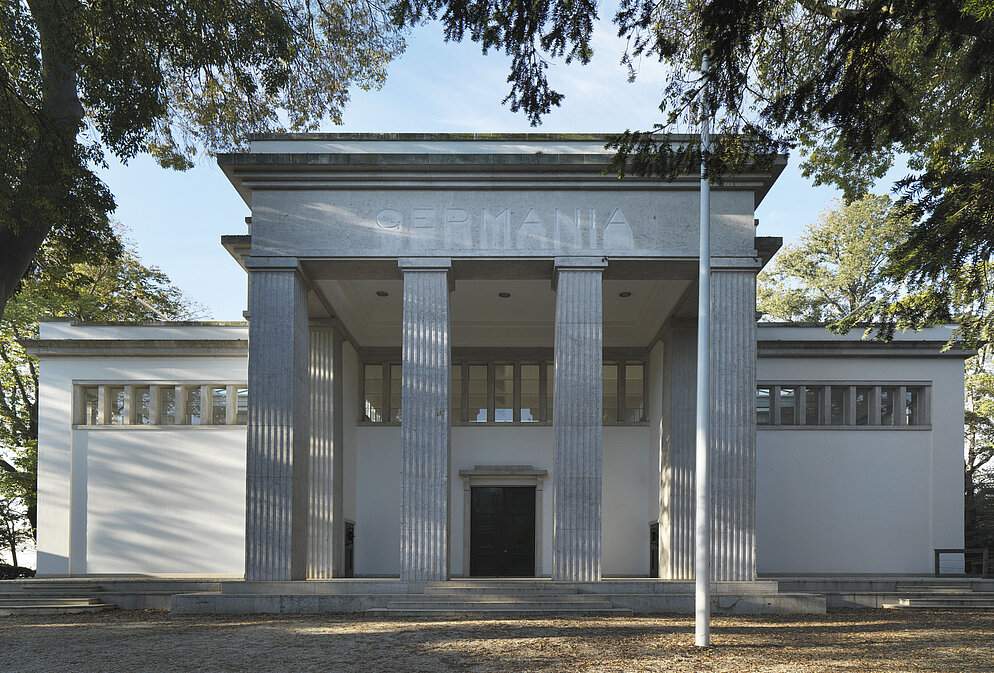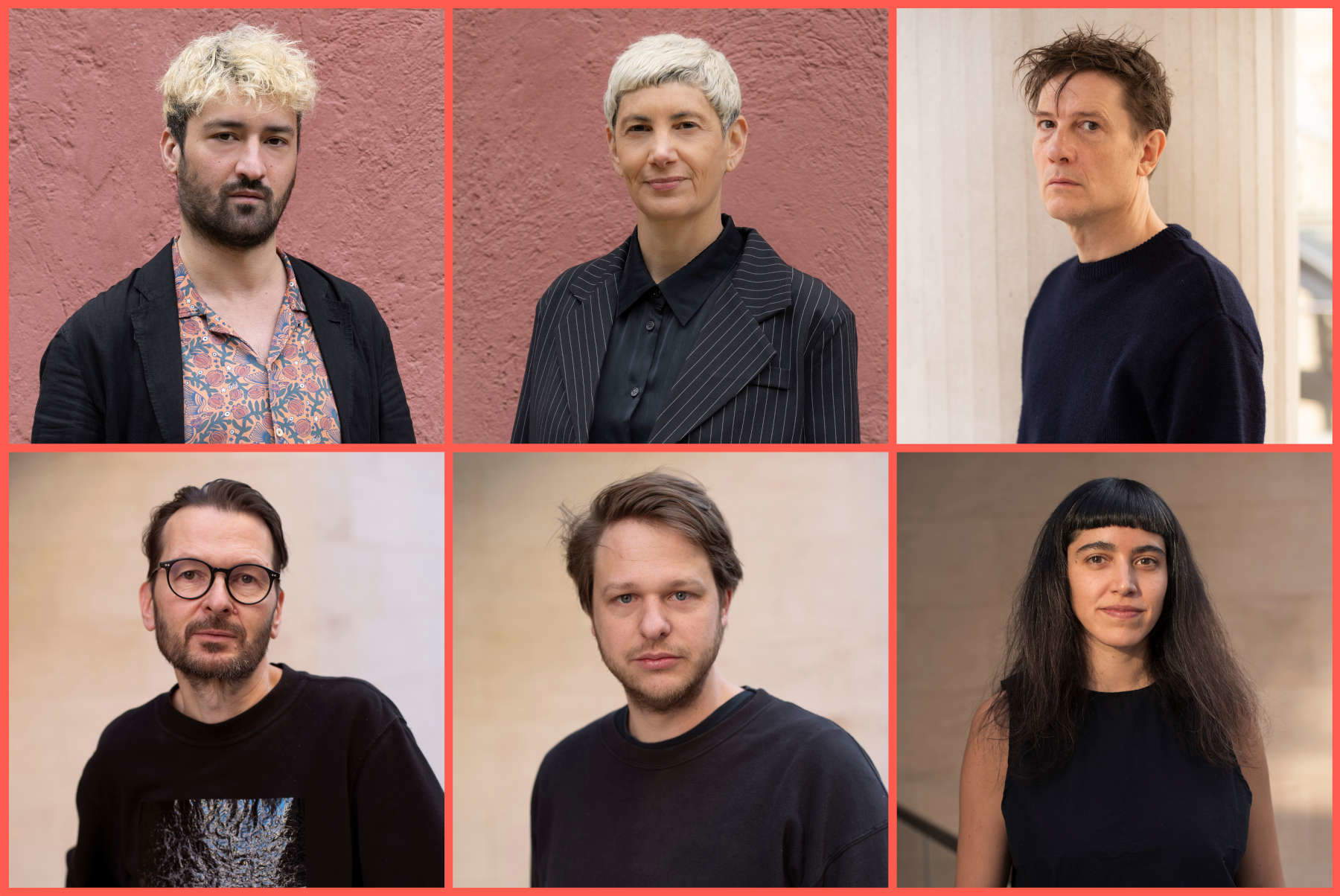Migration connections are the theme of the Germany Pavilion at Biennale 2024
Under the title Thresholds, the German Pavilion at the Venice Art Biennale 2024 visitable from April 20 to November 24, 2024, tells the story and the future from different artistic positions. Curated by architect ÇaÄŸla Ilk for the 60th International Art Exhibition titled Strangers Everywhere - Foreigners Everywhere, curated by Adriano Pedrosa, the project unites individuals with migration paths through the present as a junction between past and future, accompanied by a spatial and physical experience of living in diverse contexts. Thresholds stands for the present as a place where no one can stay and that exists only because one thing has happened and another still awaits.
The artistic contribution to the German Pavilion approaches the theme of borders through three scenarios. In the first scenario, artist Yael Bartana enters the threshold of a present perceived as catastrophic: a world on the brink of total destruction. In search of a way out, she imagines a possibility of future survival through a multifaceted work balanced between dystopia and utopia. In his work, Bartana constructs alternative stories that explore imagined and shared futures. In the second scenario, Ersan Mondtag develops a space that contrasts with the monumental character of the pavilion through fragmented storytelling. In his work, he explores what would happen if it were possible to revive past eras as living environments. By creating a theatrical cosmos of representation and remembrance, Mondtag challenges moving national historiographical constructs. In addition to Bartana’s and Mondtag’s works in the German Pavilion, the contribution extends to a third setting, building a connection to a place outside the Giardini della Biennale:Certosa Island. Moving beyond the pavilion, Thresholds focuses on the significance of the moment of temporal and spatial transition. Artists Michael Akstaller, Nicole L’Huillier, Robert Lippok, and Jan St. Werner collaborate to create a resonant space in a natural environment set on Charterhouse Island. Their work contrasts with the monumentality of the German Pavilion, emphasizing the idea of passage through a threshold space.


Notes on the artists
Yael Bartana, class of 1970, is an observer of the contemporary. She uses art as a scalpel inside the mechanisms of power structures, navigating the thin, cracked line between the sociological and the imaginary. In her films, installations, photographs, theatrical performances and public monuments, she investigates themes such as national identity, trauma and displacement, often through ceremonies, memorials, public rituals and collective gatherings. His work has been exhibited around the world, including the Jewish Museum Berlin (2021), Kunsthalle Baden-Baden (2020), Modena Visual Arts Foundation (2019/2020), Philadelphia Museum of Art (2018), Stedelijk Museum Amsterdam (2015), São Paulo Biennial (2014, 2010, 2006), Berlin Biennale (2012), Venice Biennale in the Polish pavilion (2011), and documenta 12 (2007). Her work is represented in the collections of numerous museums, including the Museum of Modern Art in New York, the Tate Modern in London and the Centre Pompidou in Paris. Yael Bartana was awarded the Rome Villa Massimo Prize for the biennium 2023/24 and will reside at the Villa Massimo until the end of June 2024.
Ersan Mondtag, born in 1987, works in the fields of theater, music, performance and installation. In 2012, he founded KAPITÆL ZWEI KOLEKTIF in Munich, with which he has developed innovative performances, political experiments and interdisciplinary theatrical works. Since 2015, he has exhibited in various institutions, including the Staatliche Kunsthalle Baden-Baden (2022), Deutsche Oper Berlin (since 2022), Berliner Ensemble (since 2019), MMK Museum für Moderne Kunst in Frankfurt am Main (2017), the Münchner Kammerspiele (since 2017), the Thalia Theater in Hamburg (since 2016), the Maxim Gorki Theater in Berlin (since 2016), and the 2nd and 3rd Berliner Herbstsalon (2016, 2017). Theater magazine Theater Heute named Mondtag Young Director of the Year in 2016 and awarded him in the categories Scenographer (2016) and Costume Designer of the Year (2016, 2017). His productions, including Das Internat at Theater Dortmund (2018), Die Vernichtung at Theater Bern (2017) and Tyrannis at Staatstheater Kassel (2016), were selected for the Theatertreffen. Mondtag was awarded a short-term fellowship at Villa Massimo in 2024.
Michael Akstaller, born in 1992, is dedicated to research on flow, acoustics (hydro), and the relationship between sound and space, movement and performance. His scholarly, artistic, and curatorial practice is often interdisciplinary and collaborative, and has been exhibited in several institutions, including Silent Green in Berlin (2023), the Lenbachhaus in Munich (2022, 2021), the Staatliche Kunsthalle in Baden-Baden (2022, 2021), the 6th Ural Industrial Biennial in Yekaterinburg (2021), and the HKW in Berlin (2021), among others. Akstaller has collaborated with scientific institutions such as the Federal Institute of Hydraulic Engineering in Karlsruhe, the Academy of Fine Arts in Nuremberg, and the Federal Institute of Hydrology in Koblenz. In 2017, together with Jan St. Werner, he founded the Dynamic Acoustic Research course at the Academy of Fine Arts in Nuremberg, which has operated as an independent collective under the name DAF (Dynamic Acoustic Research) since 2021.
Nicole L’Huillier, 1985, is a transdisciplinary artist and researcher who explores sound and vibration as materials to explore themes of action, identity, collectivity and vibrational imagination. Her work manifests through installations, sonic/vibrational sculpture, auditory and sonic apparatus, sonic-cybernetic experiments, performance, poetry and writing. He received a doctorate in multimedia arts and science from the Massachusetts Institute of Technology (MIT) in 2022. His work has been exhibited in various venues, including the Ming Contemporary Art Museum (McaM) in Shanghai (2023), the ifa-Galerie in Stuttgart (2023), the Biennial of Media Arts in Santiago (2023, 2021, 2019, 2017), the Staatliche Kunsthalle in Baden-Baden (2022), the Transmediale in Berlin (2022), the Ars Electronica in Linz (2022, 2019, 2018), the Museo de Arte Contemporáneo (MAC) in Santiago de Chile (2022), the 6th Ural Industrial Biennale in Yekaterinburg (2021), and the Venice Biennale - 16th International Architecture Exhibition (2018), among others.
Robert Lippok, born in 1966, is a musician and visual artist. In 1984 he co-founded the band Ornament und Verbrechen with his brother Ronald Lippok. In the 1990s they collaborated with Stefan Schneider on the Rococo rot project and released music on several international labels, including Domino, Fat Cat, City Slang, Warp and Sub Rosa. Since 2001, Lippok has published solo projects and created sound works for artists, choreographers and architects such as Doug Aitken, Arno Brandlhuber, Julian Charrière, David Chipperfield, Clara Jo and Constanza Macras. As a visual artist, he is interested in perception, spatial sound and architecture. His works have been exhibited in a variety of venues, including the Centro de Exposiciones SUBTE in Montevideo (2023), the Staatliche Kunsthalle in Baden-Baden (2022), the 6th Ural Industrial Biennial in Yekaterinburg (2021), Gropius Bau in Berlin (2020, in collaboration with Joulia Strauss), the Berliner Festspiele (2019), the neue Gesellschaft für Bildende Kunst in Berlin (2019), and the ZKM: Zentrum für Kunst und Medien Karlsruhe (2018), among others.
Jan St. Werner, 1969, is a founding member of the music group Mouse on Mars and also releases music under his own name through the Editions Fiepblatter catalog, distributed by Chicago-based Thrill Jockey Records. During the 1990s he was involved in the Cologne-based collective A-Musik and collaborated with Markus Popp (Oval) on the Microstoria project, as well as developing music for artist Rosa Barba. From 2006 to 2008, he was artistic director at STEIM, a Dutch studio for electro-instrumental music. He has made sound interventions and exhibitions in art spaces such as the Staatliche Kunsthalle in Baden-Baden (2023), the Lenbachhaus in Munich (2023), the HKW in Berlin (2021), the 6th Ural Industrial Biennial in Yekaterinburg (2021), documenta 14 in Athens and Kassel (2017), the Institute of Contemporary Arts (ICA) in London in 2009, and the Kunsthalle Düsseldorf in 2004. He was a visiting lecturer at the Massachusetts Institute of Technology (MIT) in 2016 and 2017, among other assignments. From 2017 to 2021, he was a professor at the Academy of Fine Arts in Nuremberg, where he initiated, together with Michael Akstaller, the course for dynamic acoustic research in 2017, which has operated as an independent DAF collective since 2021. Jan St. Werner currently resides in Berlin.
 |
| Migration connections are the theme of the Germany Pavilion at Biennale 2024 |
Warning: the translation into English of the original Italian article was created using automatic tools. We undertake to review all articles, but we do not guarantee the total absence of inaccuracies in the translation due to the program. You can find the original by clicking on the ITA button. If you find any mistake,please contact us.




























